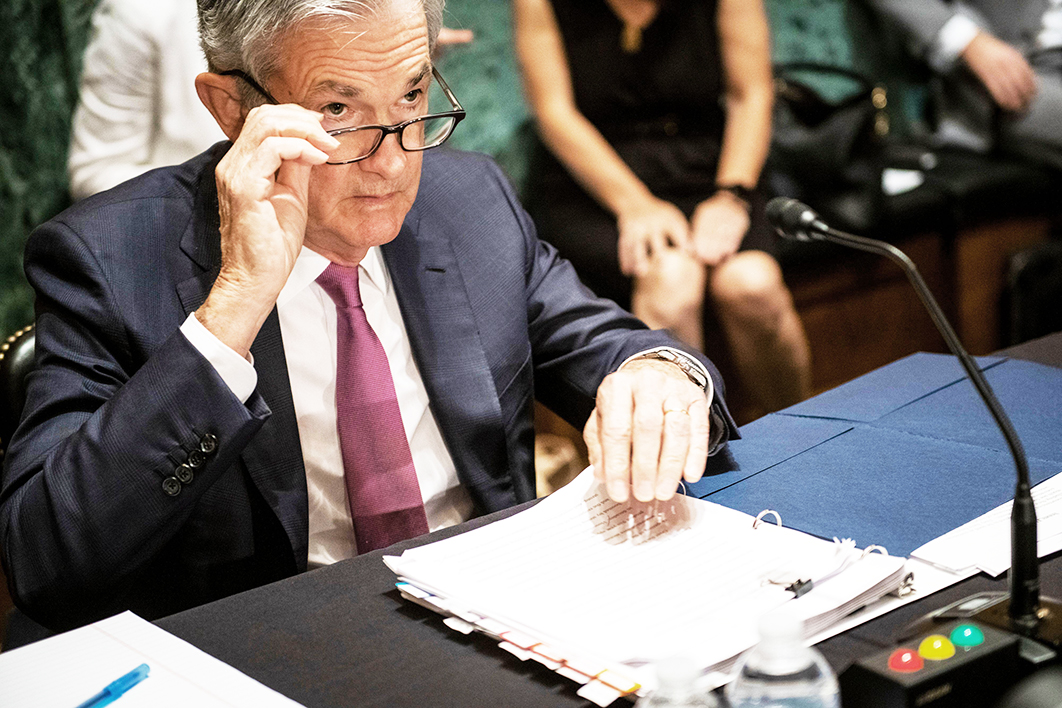Twenty-thirteen is a year Ben Bernanke would rather forget. In May that year, the then chair of the US Federal Reserve remarked during his testimony to Congress that he was considering when to start tapering the Fed’s program of “quantitative easing” — the process by which a central bank creates new money to buy assets with the aim of reducing long-term interest rates.
Financial markets went ballistic. During years of ultra-low interest rates to fight the global financial crisis, investors had searched overseas for better returns. Much of their money had gone to developing countries — places like Indonesia, India, Brazil, South Africa and Turkey — where interest rates were higher.
Bernanke’s remark had barely left his lips before the global financial system slammed on the brakes and shifted gears abruptly into reverse. Anticipating higher interest rates in the United States, investors began a fire sale of assets in developing countries and scrambled to send their money back to America. As the US dollar skyrocketed, developing countries saw their exchange rates crash, asset prices tumble and financial capital vanish.
Many of these countries were forced to raise interest rates to stabilise their exchange rates and buttress their financial systems. But the stability came at a cost. Economic growth took a hit; jobs were destroyed. Make no mistake: in countries struggling to reduce poverty, financial shocks like these cost lives.
Dubbed the “taper tantrum,” this abysmal absence of international cooperation looks set to happen again, and the timing for developing countries couldn’t be worse.
In their battle with the Covid-19 pandemic, rich-world central banks have quite rightly used a range of unconventional measures to push down interest rates. Asset prices have skyrocketed and stocks, bonds, property and cryptocurrencies have gone through the roof as investors bet big that low interest rates are here to stay.
If they’re wrong, we’re in trouble. Low interest rates are the key ingredient for many of these investments to make sense. Little wonder that markets are watching the inflation numbers nervously; any sustained rise in inflation could see central banks raise interest rates.
So far it’s not looking great. In the three months to May, inflation in the United States reached 8.3 per cent on an annualised basis, the highest since the early 1980s. Luckily, particularly for developing countries, higher interest rates aren’t an inevitable result.
One reason inflation is so high is simple maths. The 8.3 per cent inflation figure is a year-on-year measure: it’s going to be high in 2021 simply because it was so low in 2020. Even accounting for these “base effects,” though, prices are notably higher for durable goods like cars, furniture and household appliances because demand for those goods is outstripping supply. Why? Because households are unleashing pent-up demand accumulated during the pandemic.
Some global supply chains aren’t helping. Shortages of inputs like microchips and timber are also pushing up prices. In many US industries, customers are returning to businesses faster than their workers are, threating further inflation through wage pressures.
So, will interest rates rise? Given that most of the inflationary pressures are temporary, there are reasons to believe that central banks will hold fire. This is particularly the case for the Fed, whose current chair, Jerome Powell, has adopted a policy of allowing inflation to exceed its target for a period to “catch up” on the preceding period of anaemically low inflation.
Over the weekend, Powell said he believed that the current bout of inflation would be temporary and articulated a path for carefully tapering quantitative easing. But some are worried that the Fed might lose its nerve and increase interest rates if inflationary pressures are big enough for long enough. Other central banks have already started reducing their supports or announced they will soon do so, including in Canada, Australia, Britain, New Zealand and the euro area.
A sharp and disorderly increase in interest rates in the rich world could spell disaster for the developing world. More than a hundred developing countries have sought assistance from the International Monetary Fund as their health systems buckle under the pressure. An inability to obtain enough vaccines, thanks in part to the immoral hoarding of vaccines by the rich world, has condemned these countries — the very ones that desperately need growth — to a slow recovery.
Luckily, there are things the rich world, including Australia, can do to help reduce their financial impact on developing countries.
The biggest risk to developing countries is that investors withdraw their funds as interest rates rise in the rich world, causing their exchange rates to collapse. The debts of developing countries with lots of foreign-denominated debt (which is many of them) would surge, potentially triggering a crisis. To stop this, developing countries need reserves of foreign currency that they can use to stabilise their exchange rates.
The rich world should give developing countries the reserves they need. The International Monetary Fund has approved US$650 billion of support through its “special drawing rights” facility, but ironically the majority of this goes to rich countries. The rich world should voluntarily redirect this money to the developing countries most in need of support and ensure other IMF facilities can be accessed as easily as possible, with fewer strings attached than normal.
But more will be required. Rich countries should expand their networks of bilateral currency swap lines. The Reserve Bank of Australia, for instance, can allow Bank Indonesia to swap rupiah for Aussie dollars, use those dollars to stabilise its financial system, and swap them back later. These facilities are rarely used after they are announced because the mere announcement sends a powerful signal to markets that developing countries can continue to honour their international debts. Josh Frydenberg should increase the size of Australia’s stand-by loan with Indonesia to send a clear signal to markets that we’ve got their back.
Some developing countries will need more. Many of the debts accumulated during Covid-19 — debts they had no choice but to incur — won’t be sustainable when rich-world interest rates go up. This is an opportunity for the G20 to expand its debt-forgiveness program.
Finally, rich-world governments should better coordinate their policies, both domestically and internationally. Domestically, if inflationary pressures persist, governments should consider reducing their spending to take the pressure off monetary policy and their exchange rate. Internationally, governments should use forums like the G20 and APEC to communicate their policy intentions to developing countries, and carefully analyse the collective impact of their policy changes on the rest of the world and strengthen safety nets accordingly.
History will remember many things from the Covid-19 period. One of them will be the failure of the rich world to take care of those in the developing world. It’s one thing not to help developing countries. It’s another to actively make their lives worse. •




